Losing a part of the foot can be life-changing, but with the right prosthetic solution, people can regain mobility and confidence. Partial foot prosthetics help users walk more naturally, distribute weight evenly, and protect sensitive areas from excessive pressure. However, one of the biggest challenges with these prosthetics is skin breakdown. Constant friction, pressure points, and trapped moisture can lead to blisters, sores, and long-term discomfort if not properly managed.
A well-fitted prosthesis should feel like an extension of the body, but achieving that level of comfort requires attention to detail. The materials used, the way the prosthesis fits, and how well the skin is cared for all play a role in preventing irritation and injury. This article will explore the common causes of skin breakdown, the best ways to keep your prosthetic comfortable for all-day wear, and how to make adjustments that enhance both durability and ease of use.

Understanding Skin Breakdown in Partial Foot Prosthetics
Wearing a partial foot prosthesis should help improve mobility, but if not properly managed, it can lead to skin breakdown.
This occurs when the skin becomes irritated, inflamed, or damaged due to continuous friction, pressure, or moisture buildup.
Since the remaining foot must bear weight differently than before, certain areas may experience excessive strain, making them more vulnerable to sores and blisters.
Causes of Skin Irritation and Breakdown
One of the most common causes of skin breakdown is excessive pressure. The foot is designed to distribute weight evenly, but after an amputation, the balance is altered.
Areas that never had to bear much weight before suddenly become pressure points.
If the prosthesis does not fit properly, these areas can become sore, leading to painful blisters and, in severe cases, open wounds.
Friction is another major factor. If the prosthesis rubs against the skin with every step, it can cause irritation and redness.
This problem is often worsened when the prosthesis is slightly loose, causing constant movement inside the socket. Even a small amount of rubbing can cause skin damage over time.
Moisture also plays a role in skin breakdown. Sweat and humidity inside the prosthesis can make the skin softer and more prone to damage.
When the skin remains damp for long periods, it can break down more easily, leading to rashes and fungal infections.
Prosthetic users who live in warm or humid climates must be especially careful about keeping their skin dry and healthy.
How Poor Fit Can Make the Problem Worse
A well-fitted prosthesis is essential for both comfort and skin health. If the prosthesis is too tight, it can create pressure points that cut off circulation, leading to discomfort and swelling.
If it is too loose, it will move excessively, causing friction and irritation. Either scenario increases the risk of developing painful sores.
The type of material used inside the prosthesis also affects comfort. Some materials are more breathable and flexible, while others may trap heat and moisture.
If the liner or socket does not allow for airflow, it can create the perfect environment for skin irritation. Prosthetic users should work closely with their prosthetist to ensure that their device is made from materials that promote skin health.
Why Regular Skin Checks Are Important
Because skin breakdown can happen gradually, it is important for prosthetic users to check their skin every day. Small red spots or areas of irritation can quickly turn into bigger problems if ignored.
Any sign of discomfort, whether it is a burning sensation, tenderness, or mild swelling, should be addressed immediately.
Early detection allows for quick adjustments, whether that means modifying the prosthesis, using protective padding, or changing how the foot is positioned inside the socket.
Preventative care is always better than dealing with an injury after it has already developed.
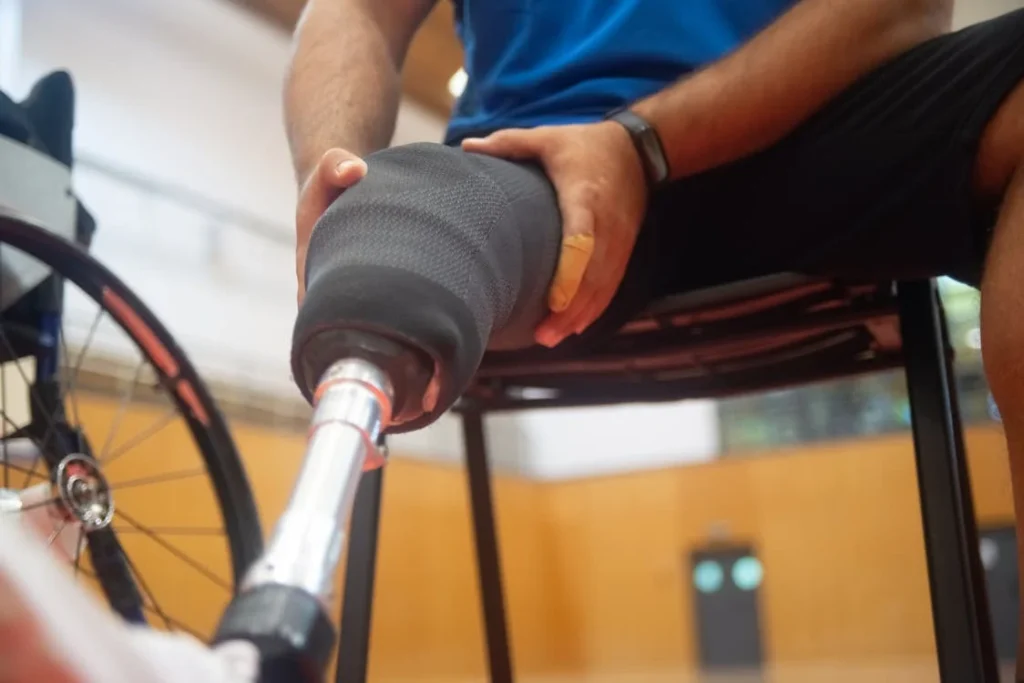
Optimizing Fit and Alignment for Maximum Comfort
The key to preventing skin breakdown and improving comfort in partial foot prosthetics starts with the right fit. A well-fitted prosthesis not only reduces pressure and friction but also enhances stability and balance.
Even small misalignments can lead to long-term discomfort, so regular adjustments and professional fittings are essential.
How Proper Fit Prevents Skin Damage
A prosthesis that fits well distributes weight evenly across the remaining foot, preventing excessive pressure on certain areas. When pressure is concentrated in a small spot, it can cut off circulation, leading to redness, swelling, and even open sores.
A good prosthetic fit ensures that no single part of the foot is overworked while walking, reducing strain and preventing discomfort.
Proper fit also eliminates unnecessary movement inside the prosthesis. If there is too much space between the foot and the socket, the prosthesis will shift with every step.
This movement leads to friction, which can cause painful blisters and skin irritation. At the same time, a fit that is too tight can squeeze the foot, restricting blood flow and leading to numbness or discomfort.
The Role of Alignment in Comfort and Mobility
Alignment plays a crucial role in prosthetic comfort. The way the prosthesis is positioned affects how weight is distributed when walking.
If the alignment is even slightly off, it can lead to increased pressure on certain areas of the foot, causing pain and skin damage over time.
A poorly aligned prosthesis can also affect overall posture and gait. When weight is not distributed properly, users may develop an unnatural walking pattern to compensate.
This can cause strain not only in the foot but also in the knees, hips, and lower back. Over time, this unnatural posture can lead to chronic pain and further mobility issues.
Working with a skilled prosthetist ensures that the prosthesis is properly aligned based on individual needs. The alignment may need small adjustments over time, especially if a user’s activity level changes or if the prosthesis starts to feel different.
Regular checkups help ensure that alignment remains correct, preventing long-term discomfort.
Making Small Adjustments for a Perfect Fit
Even after an initial fitting, minor adjustments may be necessary to achieve the best comfort. Prosthetic users should pay attention to how their prosthesis feels throughout the day.
If there is discomfort in a specific area, it may be a sign that padding needs to be adjusted, the socket needs to be reshaped, or the alignment needs fine-tuning.
Sometimes, adding soft liners or cushioning materials inside the prosthesis can improve comfort. These materials help absorb impact and reduce direct pressure on the skin.
However, they should not be used as a substitute for a properly fitted prosthesis. If padding is needed, it should be placed strategically to provide relief without affecting the overall fit.
Prosthetic users should also be aware of any changes in body weight, as this can affect the way the prosthesis fits.
Even slight weight gain or loss can alter the amount of space inside the socket, making it feel too loose or too tight. If this happens, a refitting may be necessary to maintain optimal comfort and prevent skin breakdown.
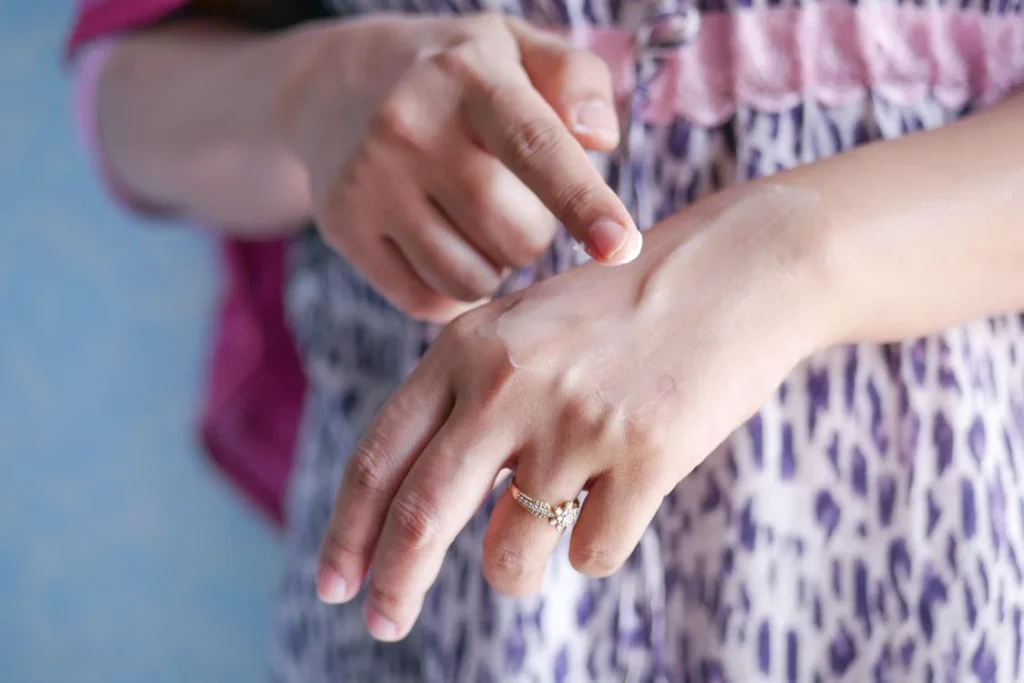
Managing Moisture and Skin Health for Long-Term Comfort
Sweat and moisture buildup inside a partial foot prosthesis can quickly lead to skin irritation, fungal infections, and increased friction. Keeping the skin dry and healthy is essential for preventing breakdown and ensuring long-term comfort.
Since the prosthesis covers a significant portion of the foot, it can trap heat and prevent airflow, making moisture management a top priority.
Why Moisture Control Matters in Prosthetic Use
When the skin stays damp for long periods, it becomes softer and more vulnerable to injury. Excessive moisture also increases friction between the skin and the prosthetic liner, which can cause painful blisters.
In some cases, prolonged dampness can lead to bacterial or fungal infections, particularly between the toes or in areas where the prosthetic socket makes close contact with the skin.
Moisture-related issues are even more common in warm and humid climates, where sweating is harder to control. Prosthetic users who are physically active or wear their device for long hours each day must take extra precautions to ensure their skin remains dry and irritation-free.
Choosing the Right Materials for Breathability
The type of materials used inside the prosthesis plays a major role in moisture control. Some prosthetic liners and socks are designed to wick away sweat, allowing it to evaporate more efficiently.
Breathable materials, such as moisture-wicking fabric or silicone-based liners with ventilation, can significantly reduce dampness inside the prosthesis.
Prosthetic socks can also help absorb moisture and prevent direct skin contact with the socket. These socks come in various thicknesses and materials, allowing users to adjust their fit and comfort throughout the day.
Changing socks regularly, especially after physical activity, helps maintain dryness and prevent irritation.
Daily Hygiene Practices for Skin Protection
Maintaining proper hygiene is one of the best ways to prevent moisture buildup and keep the skin healthy. Washing the foot daily with mild soap and warm water removes sweat, bacteria, and any residue from lotions or creams.
It is important to dry the skin thoroughly, especially between the toes, before putting on the prosthesis.
Using a prosthetic-friendly antiperspirant can help control excessive sweating. Some prosthetic users find that applying cornstarch-based powders can help absorb excess moisture, though it’s important to avoid products with talc, as they may cause skin irritation.
The inside of the prosthesis should also be cleaned regularly to prevent bacterial growth. Wiping down the liner or socket with a gentle disinfectant or antibacterial wipe at the end of the day removes sweat and keeps the prosthesis fresh for the next use.
Preventing and Treating Skin Irritation from Moisture
Even with good hygiene and moisture control, occasional skin irritation may still occur. Recognizing the early signs of irritation, such as redness, itching, or a burning sensation, allows users to take action before the condition worsens.
If the skin becomes irritated, allowing it to air out and applying a gentle moisturizer can help soothe minor discomfort. However, heavy creams or greasy ointments should be avoided, as they can create excess moisture and lead to further irritation inside the prosthesis.
For more serious issues, such as persistent rashes or open sores, it is important to consult a healthcare professional or prosthetist. They can recommend specialized treatments or make adjustments to the prosthesis to prevent future problems.
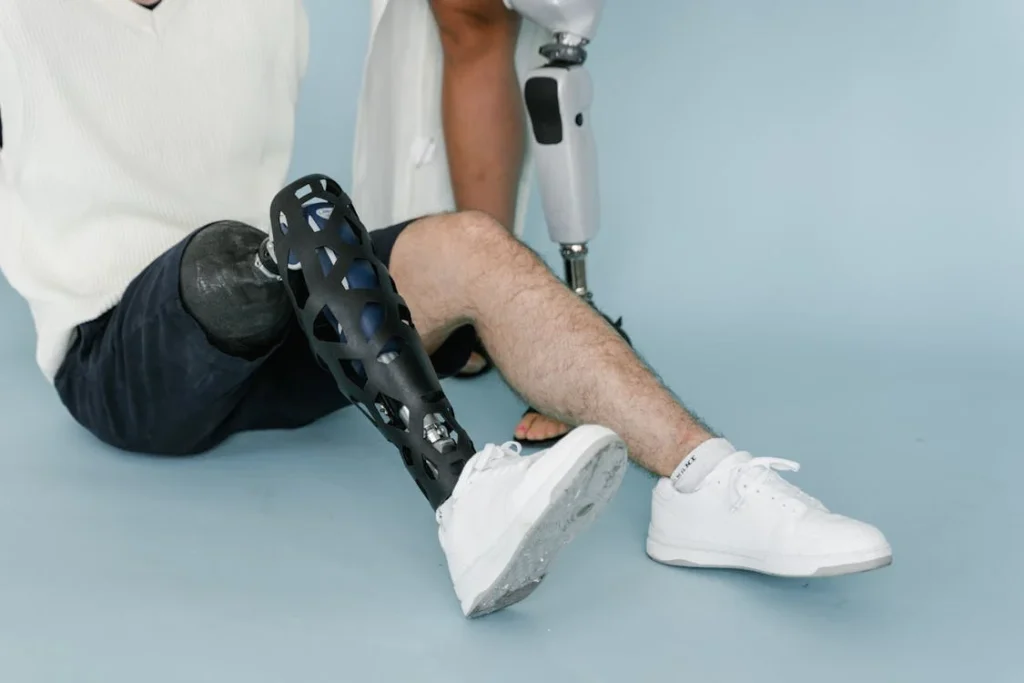
Enhancing Shock Absorption and Reducing Impact for Better Comfort
A partial foot prosthesis must absorb shock effectively to prevent excessive stress on the remaining foot. Every step taken creates an impact that travels through the prosthesis and into the foot, which can cause pain, fatigue, and skin irritation over time.
The right combination of materials, cushioning, and alignment helps minimize this impact, improving both comfort and long-term skin health.
How Shock Affects the Residual Foot
When a person walks with a partial foot prosthesis, the natural cushioning of the foot is reduced or lost due to the amputation.
Without this shock absorption, the residual foot is forced to bear more of the impact, increasing the risk of soreness and irritation. This can lead to pain in the heel, midfoot, or forefoot, depending on the design of the prosthesis.
If the shock is not properly managed, repetitive impact can also contribute to skin breakdown. Areas of the foot that experience high pressure are more likely to develop calluses, blisters, or even ulcers.
Over time, continued stress on the foot can lead to further complications, making it more difficult to wear the prosthesis comfortably.
Choosing the Right Cushioning for Impact Reduction
Cushioning inside the prosthesis plays a significant role in reducing the impact on the foot. Soft liners, gel inserts, and specialized prosthetic footbeds help absorb shock and evenly distribute pressure.
The goal is to create a smooth transition from heel to toe while walking, reducing the force that travels through the foot with each step.
Some prosthetic designs incorporate built-in shock absorption in the form of flexible soles or energy-return materials. These materials act as a buffer, allowing the prosthesis to absorb and redistribute energy more efficiently.
A well-cushioned prosthesis not only improves comfort but also helps reduce overall fatigue by making walking feel more natural and effortless.
How Footwear Affects Shock Absorption
The shoes worn with a partial foot prosthesis significantly influence comfort and impact absorption. Supportive footwear with good arch support, cushioned soles, and a secure fit helps enhance the prosthesis’s ability to reduce strain on the foot.
Shoes with rigid or thin soles can increase impact stress, causing discomfort and irritation.
A good prosthetist will consider footwear compatibility when designing a partial foot prosthesis, ensuring that the combination of the prosthesis and shoes works together to minimize shock.
For individuals who switch between different types of shoes, small adjustments in the prosthesis may be necessary to maintain proper support and alignment.
Regular check-ins with a prosthetist help ensure that the prosthesis and footwear remain well-matched for long-term comfort.
Maintaining Proper Walking Mechanics to Reduce Impact
Beyond cushioning and footwear, the way a person walks also affects shock absorption. Walking with an uneven gait or placing too much pressure on certain areas of the foot can increase the force of impact, leading to pain and skin irritation.
Physical therapy or gait training with a prosthetist can help improve walking mechanics. Learning how to distribute weight evenly, step smoothly, and use the prosthesis effectively reduces unnecessary stress on the foot.
Over time, improved gait mechanics lead to better comfort and fewer skin-related issues.
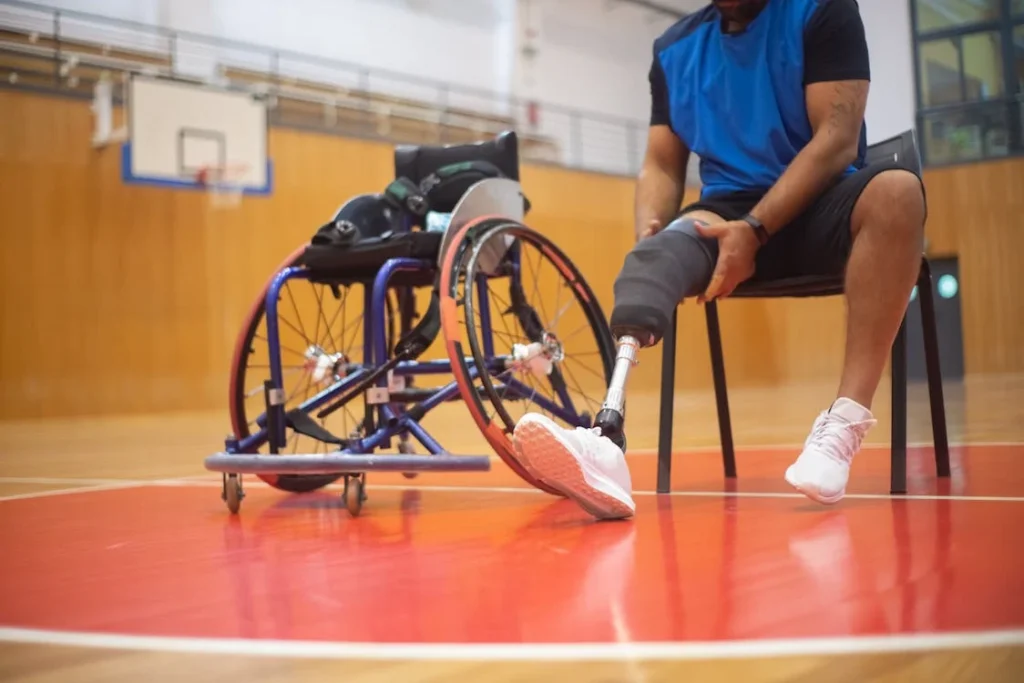
Preventing Pressure Sores and Hot Spots in Partial Foot Prosthetics
Pressure sores and hot spots are among the most common problems faced by individuals using partial foot prosthetics.
These painful areas develop when excessive pressure is concentrated on certain parts of the foot, leading to irritation, redness, and in severe cases, open wounds.
Preventing these issues requires a combination of proper fit, strategic cushioning, and ongoing skin care to ensure long-term comfort and mobility.
Understanding How Pressure Sores Develop
Pressure sores form when there is prolonged compression on a specific area of the foot. The lack of proper blood flow in these areas causes the skin and underlying tissues to break down, leading to painful wounds.
Hot spots, which are areas of increased warmth and redness, are often the first warning signs that a pressure sore is developing.
The problem arises when the prosthesis does not evenly distribute weight across the foot. If the prosthetic socket or insert presses too hard on one part of the foot, that area absorbs more pressure than it should.
Over time, the skin becomes irritated and starts to break down, making it difficult to continue wearing the prosthesis without discomfort.
Other factors can make pressure sores worse, including friction from a loose prosthesis, moisture buildup inside the socket, and a lack of movement that keeps certain areas of the foot under continuous strain.
Understanding these risk factors is the first step in preventing serious skin damage.
How to Reduce Pressure Points for Better Comfort
A well-fitted prosthesis should distribute weight evenly, preventing excessive stress on any one part of the foot. Regular adjustments by a prosthetist help ensure that the fit remains ideal as the foot changes over time.
If a user notices persistent discomfort in a specific area, it is often a sign that the prosthesis needs modifications to relieve pressure.
Cushioning inside the prosthesis also plays a crucial role in pressure distribution. Soft liners, gel pads, and custom-molded footbeds help absorb impact and spread out pressure more evenly.
These materials reduce the risk of pressure sores by providing extra protection to sensitive areas, particularly on the heel and the ball of the foot.
Wearing the right socks can also help minimize pressure and friction. Prosthetic socks come in different thicknesses, allowing users to fine-tune the fit of their prosthesis.
A snug but not overly tight sock helps eliminate small movements inside the socket that can lead to rubbing and irritation. Changing socks throughout the day, especially in warm weather, prevents moisture buildup and keeps the skin dry.
Recognizing Early Warning Signs of Skin Damage
Since pressure sores develop gradually, early detection is key to preventing serious complications. Checking the skin daily for signs of redness, tenderness, or warm spots helps identify problem areas before they become severe.
If a user experiences persistent soreness in a specific location, taking immediate action—such as adjusting the fit or adding padding—can prevent the issue from worsening.
Swelling around the foot or ankle can also indicate that pressure is not being distributed properly. If the prosthesis feels tighter than usual or leaves deep marks on the skin after removal, it may be pressing too hard on certain areas.
In these cases, visiting a prosthetist for an evaluation ensures that adjustments are made before a pressure sore develops.
Long-Term Strategies for Preventing Pressure Sores
Consistency in skin care and prosthetic maintenance plays a crucial role in preventing pressure sores. Keeping the skin well-moisturized but not overly soft helps maintain its natural barrier against irritation.
Using a gentle, non-greasy lotion at night allows the skin to stay hydrated without increasing friction inside the prosthesis.
Taking short breaks throughout the day to remove the prosthesis and allow the skin to breathe can also help reduce pressure buildup. Whenever possible, elevating the foot for a few minutes helps improve circulation and reduces swelling.
Regular follow-ups with a prosthetist ensure that the prosthesis continues to fit properly. As the body adapts to prosthetic use, small changes in muscle tone, weight distribution, or activity level may require adjustments to maintain the best fit.
By taking a proactive approach to pressure management, users can significantly reduce the risk of pressure sores and hot spots, ensuring greater comfort and a more enjoyable prosthetic experience.
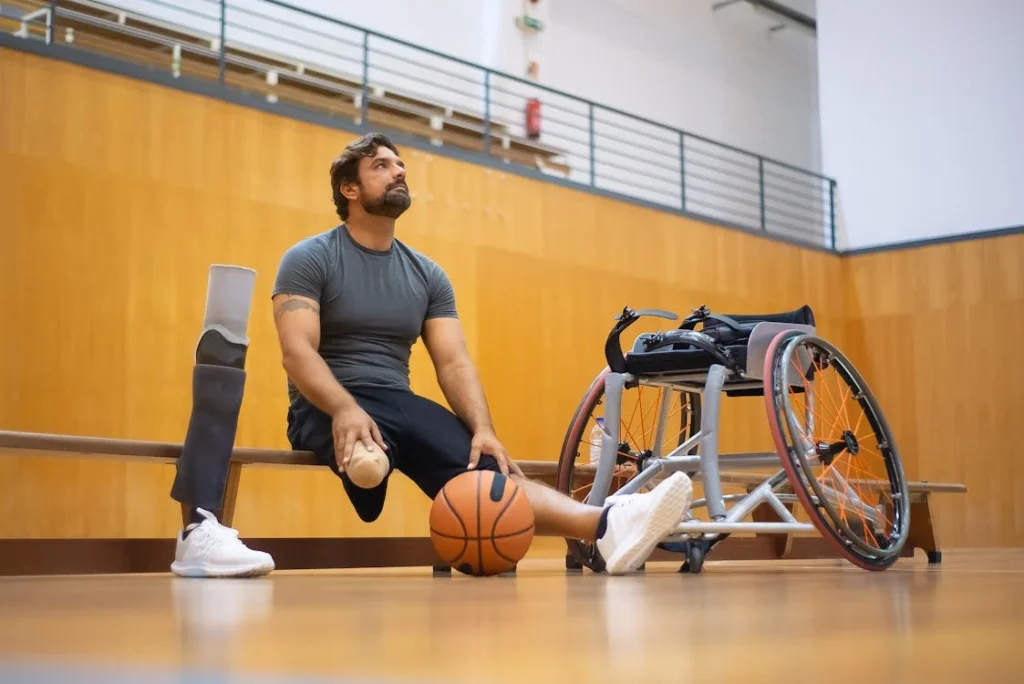
Improving Daily Comfort and Long-Term Prosthetic Use
A partial foot prosthesis should not only restore mobility but also allow for long-term comfort and ease of use.
Many individuals wear their prosthesis for extended periods each day, which means any minor discomfort can turn into a bigger problem if not addressed early.
Small adjustments, proper skin care, and personalized modifications can make a significant difference in overall prosthetic experience.
Adapting to Daily Wear and Avoiding Fatigue
Wearing a prosthesis for several hours a day requires the body to adapt to a new way of walking and bearing weight.
This adjustment period can sometimes lead to muscle fatigue, especially in the lower leg, as the body compensates for the missing portion of the foot.
Overuse of certain muscles, particularly in the ankle and calf, can cause soreness, making it important to gradually build up endurance.
One of the best ways to avoid fatigue is by maintaining proper posture and walking mechanics.
Users should focus on even weight distribution and avoid favoring one side of the body, as this can create unnecessary strain.
Gait training with a physical therapist can help develop smoother walking patterns, reducing stress on the residual foot and surrounding joints.
Footwear also plays an essential role in reducing fatigue. Supportive shoes with cushioned soles help absorb impact, reducing the effort required with each step.
A prosthesis designed to match the user’s activity level ensures that walking remains as natural and energy-efficient as possible.
How Small Adjustments Can Improve Everyday Comfort
Even the best-fitted prosthesis may need small changes over time to maintain comfort. Users should pay close attention to any signs of discomfort, such as areas of the foot feeling pinched, sore, or excessively warm.
Minor modifications, like adding a soft liner or adjusting the socket shape, can make a big difference in reducing pressure points.
Temperature and humidity can also affect how a prosthesis feels. In warm weather, the foot may swell slightly, making the prosthesis feel tighter than usual.
In cooler temperatures, the opposite may occur, leading to a looser fit. Adjusting sock thickness throughout the year helps maintain a consistent and comfortable fit.
Another important factor is the weight of the prosthesis. While lightweight designs improve comfort, they should still provide enough support to maintain stability.
Some users find that switching between different prosthetic inserts, depending on their activity level, helps keep their foot comfortable throughout the day.
Maintaining Long-Term Prosthetic Functionality
A partial foot prosthesis requires regular care to remain effective. Cleaning the liner and socket frequently prevents dirt and bacteria from building up, which can lead to skin irritation.
Any worn-out components, such as insoles or padding, should be replaced promptly to maintain the best support.
Periodic checkups with a prosthetist ensure that the prosthesis continues to meet the user’s needs.
Over time, the shape of the residual foot may change slightly due to weight fluctuations or muscle adjustments. Regular assessments help identify any necessary modifications to maintain a perfect fit.
Staying active also contributes to long-term prosthetic comfort. Engaging in low-impact exercises, such as swimming or cycling, strengthens the muscles that support the prosthesis, improving overall endurance.
Stronger muscles mean better balance, less fatigue, and reduced risk of discomfort when walking.
By paying attention to these daily and long-term factors, users can ensure their prosthesis remains comfortable, functional, and supportive for years to come.
Conclusion
Preventing skin breakdown and improving comfort in partial foot prosthetics requires a combination of proper fit, moisture management, shock absorption, and pressure relief. A well-fitted prosthesis should distribute weight evenly, minimize friction, and allow for all-day comfort without causing irritation. Regular skin checks, daily hygiene, and small adjustments can prevent minor discomfort from turning into serious issues.
Working closely with a prosthetist ensures that the prosthesis remains functional and supportive over time. As the body adapts, periodic modifications may be needed to maintain the best fit. Choosing breathable materials, wearing proper footwear, and maintaining good walking mechanics all contribute to a more natural and pain-free experience.
Living with a partial foot prosthesis should not mean dealing with constant discomfort. By taking proactive steps in skin care, prosthetic maintenance, and daily wear habits, users can improve both mobility and quality of life. The goal is not just to walk—but to move confidently, comfortably, and without limitations.



